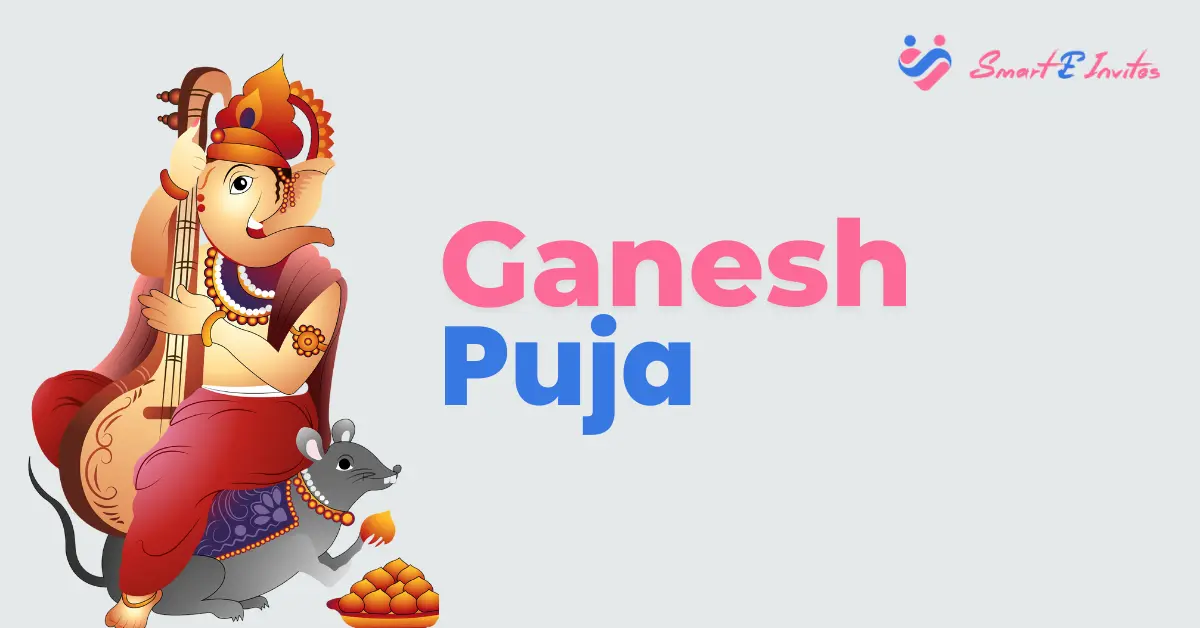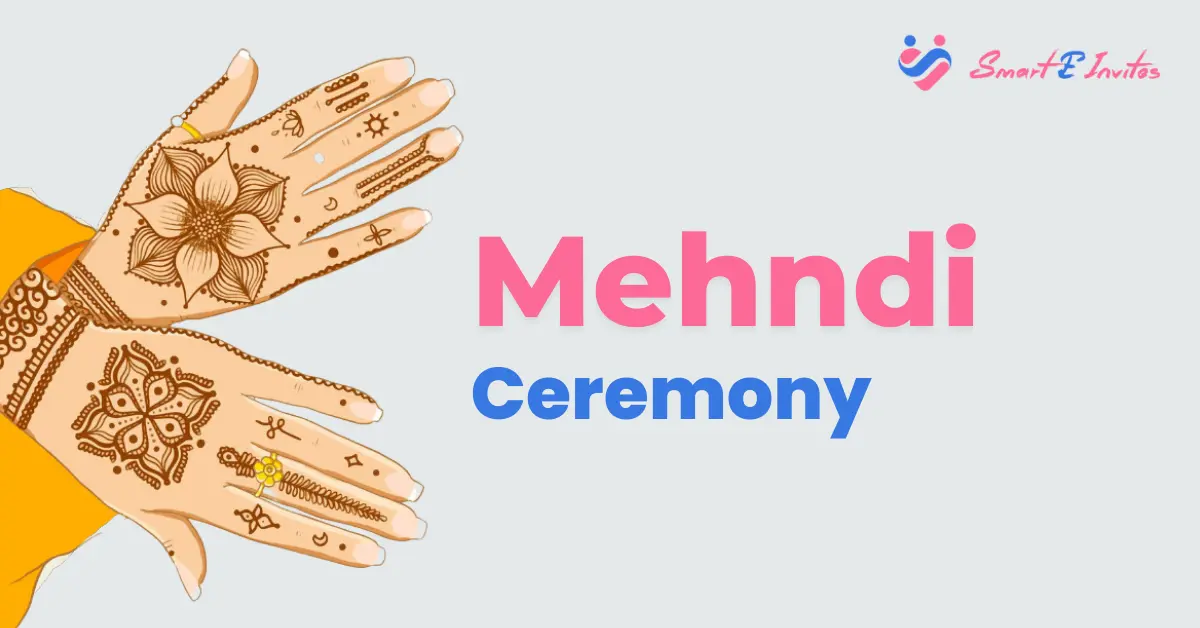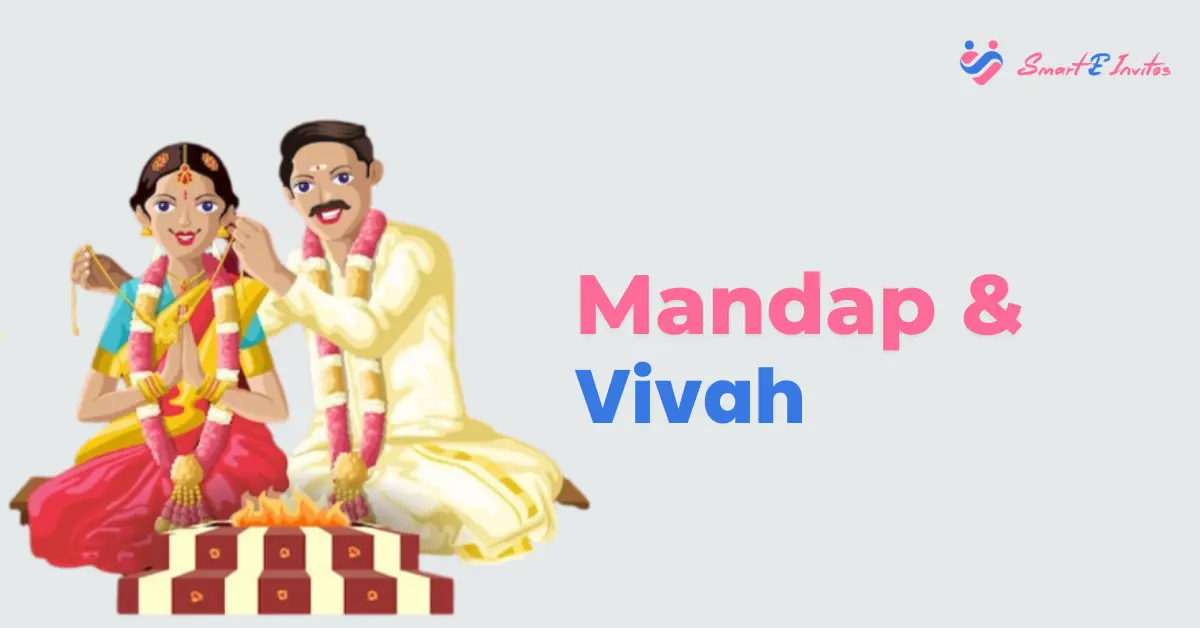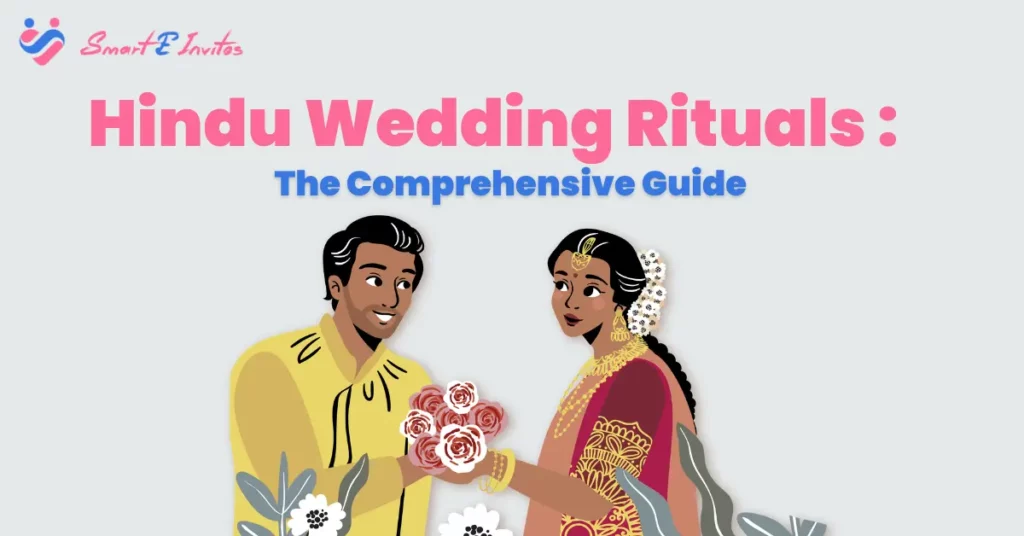A Hindu wedding is known for its rich cultural traditions, vibrant colours, and elaborate rituals symbolising two souls’ sacred union. Steeped in ancient customs and beliefs, these ceremonies are a beautiful blend of family values and festive celebrations. This comprehensive guide will explore the key Hindu marriage functions list. Also, it will include their significance and the joyous moments that make these unions truly special.
Top 8 Essential Steps In Hindu Wedding Rituals & Ceremonies
Here we are explaining the complete steps for a Hindu wedding. Moreover, each ceremony has its significance as a Hindu wedding ritual. It includes marking a sacred union between the bride and groom and their families.
Ganesh Puja

The auspicious journey of a Hindu wedding begins with the Ganesh Puja, where Lord Ganesha, the remover of obstacles, is invoked. Moreover, this Indian wedding ceremony seeks the blessings of Lord Ganesha for a smooth and successful wedding ceremony.
Ganesh Puja, an integral part of Hindu marriage rituals, holds immense significance. And it is performed to seek the blessings of Lord Ganesha, the remover of obstacles. Moreover, this sacred ceremony begins with installing a beautifully adorned idol or picture of Lord Ganesha. Then, the priest invokes the deity’s presence by chanting mantras and offering prayers.
Moreover, the couple and their families join in, offering flowers, fruits, and sweets as a mark of reverence. The Ganesh Puja is conducted with utmost devotion, seeking divine blessings for a prosperous and obstacle-free married life. Also, it symbolises the couple’s gratitude and reverence towards the deity.
Mehndi Ceremony

The Mehndi ceremony is one of the joyful pre-wedding Indian wedding functions. Intricate henna designs are applied to the bride’s hands and feet in this ceremony. Also, this event brings together the bride’s family and friends, who celebrate with music, dance, and blessings.
Also, the Mehndi Ceremony in Hindu weddings celebrates the beauty and joy of the bride-to-be. It involves applying henna designs on the bride’s hands and feet, accompanied by lively music, dance, and laughter.
The ceremony brings together family and friends who adorn their hands with henna as well, creating a festive atmosphere. The bride’s feet and hands are adorned with delicate designs, showcasing her excitement for the upcoming union. Moreover, the Mehndi Ceremony enhances the bride’s beauty and serves as a cultural tradition. At the same time, it promotes love, unity, and celebration before the wedding festivities commence.
Sangeet Ceremony

The Sangeet is a lively musical night where families celebrate the upcoming union through music, dance performances, and cultural festivities. It’s a joyous occasion filled with laughter, love, and vibrant performances.
The Sangeet Ceremony, an exuberant and vibrant tradition in Hindu weddings, is a joyous celebration of music and dance. Furthermore, this pre-wedding ritual brings together the families and friends of the bride and groom to revel in the festivities. Colourful decorations, rhythmic beats, and melodious tunes fill the air as everyone participates in song and dance performances.
However, traditional folk songs, Bollywood numbers, and cultural dances create a lively ambience. The Sangeet Ceremony showcases the talent and enthusiasm of the families. Also, it serves as an occasion for bonding, laughter, and celebration.
Moreover, it fosters a sense of togetherness as relatives and friends join hands to create memories. Also, they bless the couple with love and happiness for their new journey together.
Haldi Ceremony

The Haldi ceremony is a pre-wedding ritual where a paste of turmeric and sandalwood is applied. Also, numerous other auspicious ingredients are applied to the bride and groom’s bodies. This ritual signifies blessings and the well-wishing of the couple.
The Haldi Ceremony is one of the cherished pre-wedding rituals in Hindu weddings. Moreover, yellow hues bring good luck and ward off evil spirits. Also, the paste is lovingly applied by family and friends.
Moreover, Haldi enhances the couple’s beauty and purifies their minds and souls, preparing them for the sacred union. It is a joyful occasion filled with laughter, music, and the warmth of loved ones. Also, it creates lasting memories and lays the foundation for a blessed and blissful marriage.
Read Now – Top 5 Creative E-Invitation Designs for Your Special Occasion
Varmala and Jaimala
The Var Mala ceremony marks the groom’s entry, who the bride’s family welcomes. It involves the exchange of garlands, known as Jaimala, symbolising the acceptance of each other as life partners.
Varmala and Jaimala ceremonies are significant moments in Hindu weddings, symbolising the union of two souls and their families. The Varmala ceremony marks the formal exchange of garlands between the bride and groom. As they stand before the holy fire, the couple exchanges beautifully crafted garlands, representing acceptance and mutual respect. Moreover, the Jaimala ceremony, where the couple places floral garlands around each other’s necks, signifying their willingness to marry.
Both ceremonies are accompanied by joyous cheers, music, and blessings from the attendees, creating an atmosphere of love and celebration. These rituals highlight the sacred bond between the groom and bride as they take their first step towards a lifelong companionship.
Mandap and Vivah

The Mandap is the sacred wedding altar where the couple takes their vows. Vivah is a ritual where the couple makes sacred promises to each other in the presence of the holy fire “Agni”.
The Mandap and Vivah rituals hold deep significance in Hindu weddings, representing the sacred space and the definition of marriage. Moreover, the Mandap is a beautiful canopy, symbolising the universe and the couple’s new abode. The bride and groom sit beneath the Mandap as the priest carries out the Vivah ceremony, the actual wedding ritual.
First, the priest recites Vedic mantras, guiding the couple through sacred vows and rituals, such as exchanging garlands. Then, Mangalsutra (sacred thread) tying takes place by circling around the holy fire.
Also, the Vivah ceremony is witnessed by family and friends, who shower blessings and offer prayers for their union. It is a sacred and solemn moment that signifies the union of two souls. Also, it defines their commitment and their journey towards a blissful married life.
Saptapadi
Saptapadi, or the Seven Steps, is a significant ritual where the couple takes seven symbolic steps together. It represents the seven sacred marriage vows. With each step, they make promises of love, respect, and companionship to build a harmonious life together.
Saptapadi, a pivotal ritual in Hindu weddings, signifies the seven sacred steps the bride and groom take together. The couple takes seven vows, each step representing a commitment and promise they make to each other. These vows encompass mutual love, respect, companionship, shared responsibilities, and support. With each step, they invoke the blessings of the divine and seek guidance for a harmonious and prosperous marriage.
Furthermore, the Saptapadi ritual reinforces the sacred bond between the couple. And it emphasises the importance of unity and cooperation in their marital journey. However, it is a poignant moment, witnessed by loved ones, where the couple affirms their dedication to building a life together.
Read Now – Top 10 Unique Wedding Invitation Wording To Impress Your Guests
Mangalsutra and Sindoor
Tying the Mangalsutra (sacred thread) around the bride’s neck and applying Sindoor (vermilion) in her hair parting are essential rituals. It symbolises the married status and the lifelong bond between the couple.
Mangalsutra and Sindoor are iconic symbols in Hindu wedding rituals that hold profound significance in married life. The Mangalsutra is a sacred necklace worn by the bride and gifted to her by the groom during the wedding ceremony. It defines the marital bond and signifies the commitment and love between the groom and wife.
Moreover, It marks her married status and represents prosperity and good fortune. The Mangalsutra and Sindoor are symbols of marital unity, trust, and devotion. Also, they are the constant reminders of the sacred vows of the wedding ceremony.
These timeless rituals hold deep cultural and emotional significance. At the same time, it strengthens the bond between groom and bride in the journey of married life.
Final Thoughts
Hindu weddings are a beautiful union of traditions, customs, and spiritual significance. Each ritual holds deep meaning and is cherished as a bond between two individuals. Moreover, we honour our ceremonies of Hindu marriage and celebrate the unity of two souls embarking on a journey of love. May these rituals continue to bring joy, blessings, and harmony to every Hindu wedding celebration.
FAQs
Ques 1. What is a Mandap at a Hindu wedding?
Ans. A mandap is a sacred canopy under which Hindu wedding functions are carried out.
Ques 2. What is the importance of the Mangalasutra?
Ans. The Mangalasutra is a sacred necklace worn by Hindu married women with a huge significance as it symbolises marital status.
Ques 3. What is the role of a Pandit in a Hindu marriage?
Ans. A Pandit is a Hindu priest who carries out the wedding rituals and recites sacred verses required for the completion of the wedding.
Ques 4. What is Kanyadaan in a Hindu wedding ceremony?
Ans. Kanyadaan is the ritual where the father presents his daughter to the groom as she marks a new life.
Ques 5. What happens in the Bidaai ceremony of a Hindu wedding?
Ans. The bride says farewell to her family and wishes for a happy future with the groom.

